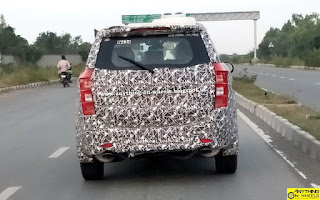Ever since Mahindra acquired Ssangyong, many believed their Indian lineup would be bolstered with the infusion of models from the South Korean brand. With Utility Vehicles being the area of expertise for both the brands, that seemed the logical next step to fuel Mahindra's growth and aspirations. In came the Rexton, Ssangyong's flagship SUV, soon afterwards, adding fuel to those beliefs.
Since then though, things have taken a long pause. Neither the Korando nor the Tivoli, Ssangyong's first new model under Mahindra's ownership that was widely speculated to be launched in India, made it here.
But, Mahindra hasn't given up on the Tivoli yet, it seems. Spotted testing on the busy GST Road in the outskirts of Chennai, this Ssangyong Tivoli test mule indicates that something's brewing at the Mahindra Research Valley, not far from where this vehicle was seen.
The Tivoli might not come to India as it is, given its compact size and hatchback-like proportions that's clearly evident in the shot below. But its well within Mahindra's reach to develop an all-new compact SUV based on the Tivoli's platform. Right now, the Nashik-based car-maker does not have a direct rival to the likes of Hyundai Creta, Renault Captur and Maruti-Suzuki S-Cross and the Tivoli-based SUV could fill in that gap nicely.
Another possibility could be Mahindra using the Tivoli to just test the Ssangyong's gasoline engine for Indian conditions. The 1.5-liter petrol engine that powers the Tivoli globally would be a welcome addition to Mahindra's still-nascent gasoline engine lineup. Don't let that small displacement fool you. This Tivoli was being driven quite aggressively and the vehicle had no problems picking up speed or darting in and out of lanes to pass slower-moving traffic, hinting at enough grunt under the hood.
Whatever their plan with the Tivoli is, Mahindra should act quick. Rivals including Maruti-Suzuki, Tata, Jeep and Volkswagen are rumored to be working on compact SUVs for India that could leave the Scorpio-manufacturer jostling for space.

































